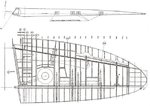Glider
Captain
Well sorry but you have presented no reliable source which contradicts it so far I'm afraid Claidemore. And seeing that the Bf-109 can turn as well as the Spitfire but can climb faster, I don't see why it wouldn't be an effective maneuver.
I still think you must be in politics or PR.
By the way what source do you have for the comment that the standard Luftwaffe evaision against a spit was a climbing tight turn. Nice statement but nothing to support it.
I have a copy of Duel of Eagles signed by Galland and Bader. In a book on his paintings Robert Taylor explains that he had to put a lot of effort into the composition of the painting. In the end he shows the Spitfire going into a turning climb. Bader and Galland agreed to the compositon, both agreeing that it looked good, showed the 109 to be on the offensive and that the Spit was safe.

